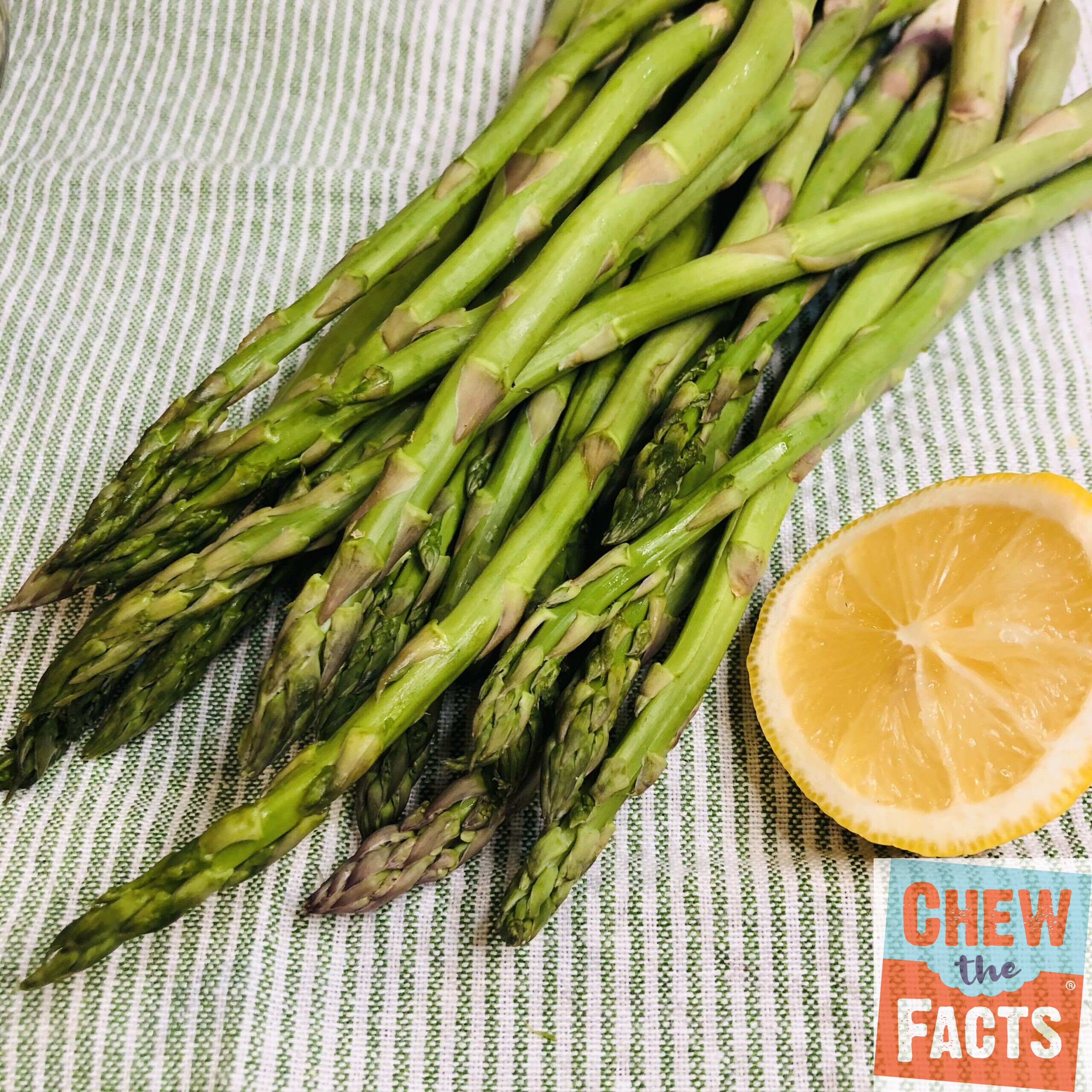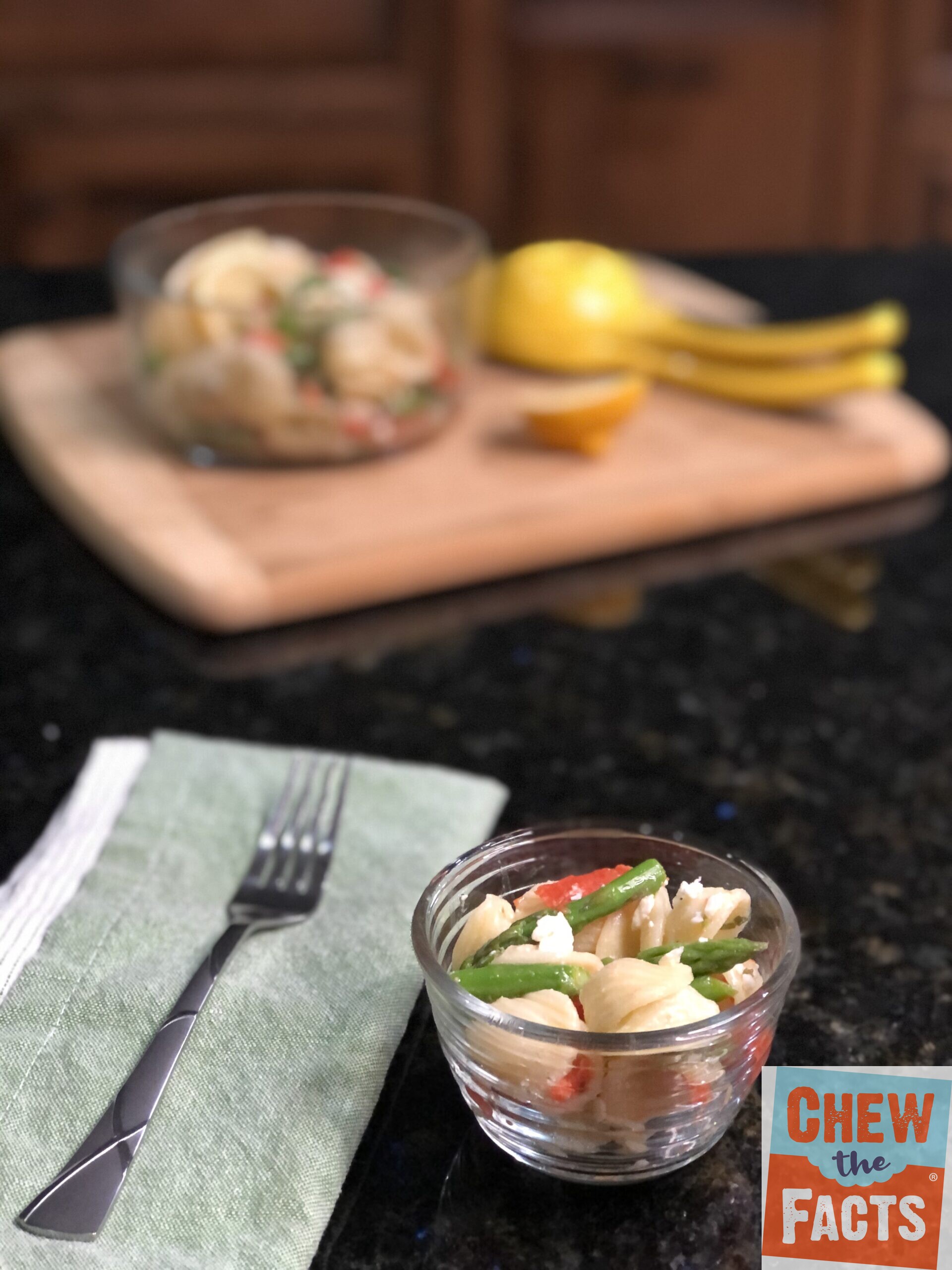My father had a robust vegetable garden for years before deciding to plant asparagus. After he passed, we continued the tradition. Asparagus is a perennial, and once seedlings grow, it will take a couple of years to bear stalks that you can pick and eat. The growing season is short, generally May-early June in cooler climates. The shoots (or spears) are technically the stem of the plant, and pop up from the underground buds. Once the shoots are about 8 or 10 inches high, you snap them off. After they are established (3-5 years) you’ll get a few bunches to eat each season. Afterward, the plant continues to grow fern-like foliage.

Nutrition Facts, Clean and Prep
Loaded with folic acid and vitamins C, A, K, and blood-pressure-lowering (mineral) potassium, asparagus packs in nutrition. A serving provides 40 calories, 4 grams protein and 4 grams fiber. It’s unique shape and flavor can really elevate a boring meal. And, it’s so simple to prep and cook. My two favorite ways to prepare it are either a quick steam or grilled. You want to be careful not to overcook it, so it retains its nutrition and that beautiful bright green color and shape.
To prep it, simply rinse the spears under cold water and snap the ends off. Rather than using a knife, I find the easiest way to do this is to simply to snap them off by hand. Hold each asparagus spear and snap the stalk. It will snap where it should, naturally removing the stringy part of the stock.
What’s that Odor?
I’m sure you’ve wondered about that funky smell in your urine after you eat asparagus. Researcher have found the culprit to be asparagusic acid, a high-sulfur compound abundant in asparagus. When your body digests asparagus it breaks down the asparagusic acid, releasing volatile components that are responsible for the smell of “asparagus pee”. This smell usually develops quickly, within 15-30 minutes of eating asparagus. Curiously, scientists aren’t sure why some people don’t have this experience. There are at least two theories: Either you don’t break down the acid to release the volatile compounds, or your nose can’t smell it!
Cooking
The easiest way to cook asparagus is to do so quickly on the stovetop. In a large shallow saucepan, add enough water to cover the bottom (about 1/2 inch). Place the pan over medium high heat and when the water simmers, add the asparagus, cover and cook for 3 to 4 minutes, drain immediately and transfer to serving platter. It should be bright green. My family also loves it grilled. Grilling yields a delicious lightly charred and smokey flavor. Simply toss cleaned asparagus with olive oil, a pinch of salt and pepper, and then grill for 4 to 5 minutes (turn them often and watch them carefully). Transfer to a serving plate, add a squeeze of lemon and some tarragon, and yum. Both ways are quick and easy yet provide a slightly different flavor profile.
Check out my recipe in the April issue of Today’s Dietitian Magazine, or try this quiche. You can also find a simple Asparagus with Lemon recipe in DASH Diet For Two, in the Sides chapter.





